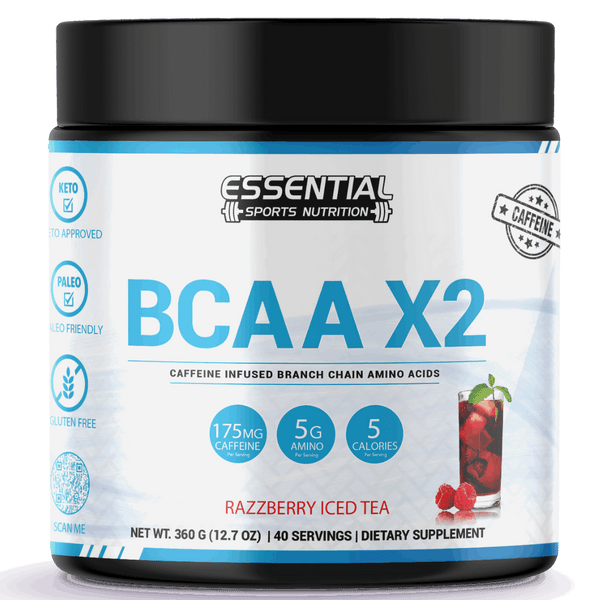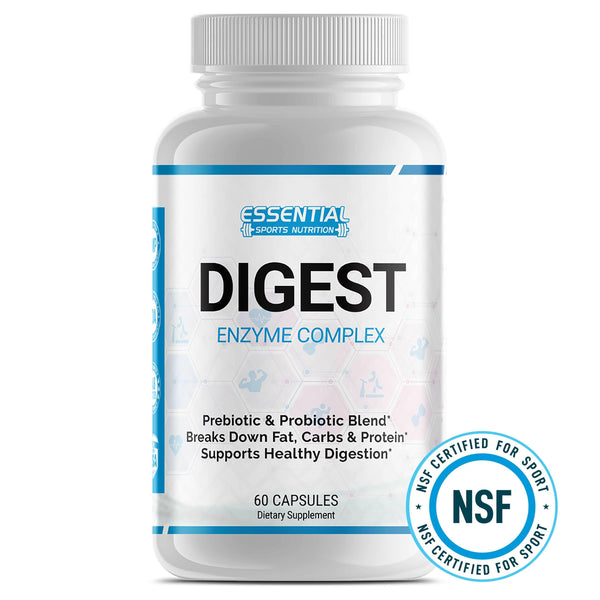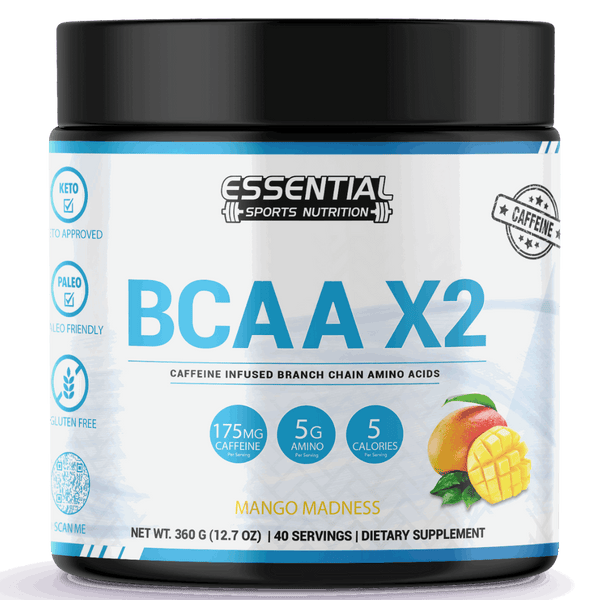Put an End to Lower Back Pain After Squats: Causes, Prevention, Relief
Put an End to Lower Back Pain After Squats: Causes, Prevention, Relief
Squats are crucial to our daily tasks like sitting and lifting. They help build key muscles and keep our backs strong. But, if your lower back feels tight after squats, it could mean you need to improve your recovery and technique.
It's vital to squat right to target the correct muscles, like glutes and quads. With the proper form, squats aid in preventing injuries and lower back pain. In this part, we'll look into why your back might feel tight after squats. Plus, we'll cover the importance of caring for yourself after exercising to boost your health and performance.
Key Takeaways
- Squats are essential for daily activities and strengthening various muscle groups.
- Proper technique is crucial to avoid lower back pain and ensure effective muscle engagement.
- Muscle tightness after squats often signifies the need for better recovery practices and technique adjustments.
- Understanding squat biomechanics can aid in fitness injury prevention.
- Effective squat recovery can include stretching, foam rolling, and targeted exercises.
Understanding Back Tightness After Squats
https://youtube.com/watch?v=0c-f7Rwd69s
Getting lower back pain from squats is pretty common, especially if you're squatting incorrectly. This discomfort can happen for many reasons, including doing squats the wrong way. To fix it, you need to improve how you do your squats.
Common Reasons for Back Tightness
People often get lower back pain while doing squats for a few reasons. If your body is not aligned correctly when you squat, like your knees bending inward, you're at risk. Not tightening your ab and back muscles right can also cause problems.
The Role of Squat Technique
Having the right squat technique is key to avoiding back pain. Making sure your feet are flat and your spine is straight spreads the weight correctly. This helps keep your lower back in good shape.
Working hard on your squat form fixes back pain and makes you better at squats. So, when you squat next, take these points seriously to stay pain-free and lift better.
Benefits of Proper Squat Form
Using the correct squat form boosts your workout. It ensures you get the most out of squats. This way, you can avoid lower back pain, a big issue for many who work out.
Reduction of Back Pain
Right squat form keeps your spine safe, cutting down on back pain. It makes sure you use your core and balance your weight right. This stops the soreness that bad posture can often cause.
Better Muscle Engagement
Proper squats get your muscles working better. Your legs and core work hard when you keep your back flat. This also makes you better at moving around every day.
| Proper Squat Form Benefits | Explanation |
|---|---|
| Avoid Lower Back Pain | Correct posture distributes load evenly, ensuring a neutral spine. |
| Improved Mobility | Enhanced muscle engagement supports functional movement in everyday tasks. |
| Reduced Soreness | Proper technique decreases the likelihood of post-workout soreness. |
Common Squat Mistakes Leading to Back Pain
To steer clear of back pain after squats, knowing common squat mistakes is key. Many people hurt your lower back because they do squats wrong. If your knees cave in or you neglect your core, you might end up hurting. Also, bending your back too much or too little can cause lower back issues.
Trying to squat with heavy weights often causes back pain after squats. It's better to slowly add weight while training. Going too low or not keeping your back straight is also a problem. By understanding and fixing these common squat mistakes, you can lower the chance of back pain.
Importance of Warm-Up Before Squats
Warming up is key before squats to avoid back strain and muscle soreness. A good warm-up boosts blood flow and gets your muscles ready for work.
Effective Warm-Up Routines
A smart warm-up includes dynamic stretches for squat muscles. Try leg swings, hip circles, and arm rotations. These moves prevent strain and improve your squat technique.
Improved Mobility and Flexibility
Warm-ups lead to better movement and flexibility. Dynamic stretches increase joint and muscle flexibility, lowering soreness. They also help keep your squat form right, which is important for avoiding injury.
How Core Strength Affects Your Squats
Getting a strong core is key for doing better squats. A strong core keeps your spine in a good position. This stops your lower back from overworking, which can lead to injuries. With a solid core, you can use your glutes and other muscles more, making your squats efficient and safer.
Exercises to Strengthen Your Core
To boost your core strength, do specific exercises. These exercises help keep your spine stable. This means less pressure on your lower back, reducing the squat injury risk. Here are some great exercises:
- Planks: Doing planks works your entire core while keeping your spine straight.
- Russian Twists: Twist your upper body while sitting to work your side muscles.
- Dead Bugs: Lying on your back and moving arms and legs helps your core and spine stay strong.
- Glute Bridges: Lifting your hips checks your back and butt muscles, important for doing squats well.
Doing these exercises often makes your core stronger. This helps keep your spine right during squats, lowering injury chances.
Role of Hip and Ankle Mobility in Squatting
Improving your squat starts with good hip and ankle movements. These parts are super important for squatting right and avoiding lower back pain. If your hip flexors are tight, your pelvis may tilt forward. Limited ankle flexibility can cause you to lean too much forward. Both issues strain your lower back. Working on flexibility and mobility through certain stretches can help. This way, you'll squat more upright and put less stress on your back.
Stretching Techniques
To ease tight hip flexors and improve movement, try some key stretches:
- Hip Flexor Stretch: Do a lunge and push your hips forward to stretch these muscles.
- Calf Stretch: Put your hands on a wall, step one foot back, and press the heel down to loosen the calves and help your ankles move better.
- Dynamic Squat Stretch: Do deep squats without weights to boost hip flexibility.
Mobility Exercises
Adding in mobility exercises besides just stretching also helps with squats:
- Goblet Squats: Hold a weight near your chest to stay upright and make your hips move better.
- Ankle Rockers: Move your weight forward with the heel down to help your ankles flex more.
- Quadruped Rock Back: Begin on hands and knees, and gently rock back, aiming to curve the lower back properly. This exercise helps shift your hips right.
Working hard on your hips and ankles can really improve your squat. This can cut down on lower back pain when squatting. Plus, it helps you move forward safely in your fitness goals.
How to Correct Your Squat Technique
Proper squat form is crucial for good training and to prevent injuries. There are key parts of the movement to focus on. This helps you perform better and lowers your injury risk.
Maintaining a Neutral Spine
Keeping your spine neutral is key to avoid getting hurt during a squat. Always warm up before you start lifting weights. When you lower yourself, don’t let your back round or arch too much. This keeps you stable and spreads the weight across your back and core well.
Proper Weight Distribution
It's important to balance the weight across your leg muscles evenly. As you squat, make sure your feet are properly placed. The weight should go from your heels to the balls of your feet. This keeps you from falling forward, which can happen if your core is weak. Practice can help you perfect this balance.
Focusing on a strong core is also crucial. A strong core helps you keep the right form and reduces the chance of hurting your lower back. Add core exercises to your routine to strengthen this important area.
| Aspect | Correct Technique | Common Mistake |
|---|---|---|
| Spine Position | Maintain a neutral spine | Rounding or excessive arching |
| Weight Distribution | Even from heel to toe | Leaning forward |
| Core Engagement | Strengthen and engage core muscles | Weak core resulting in instability |
Keep working on your technique to make your squat exercises more effective.
Recovery Stretches and Exercises for Post-Workout
Post-workout stretches and exercises are key to easing muscle tightness. They also help ensure full recovery. Include specific stretches and foam rolling in your routine. This reduces lower back pain, boosts flexibility, and cuts injury risks.
Effective Stretches for the Lower Back
Stretches for the lower back are critical in your recovery routine. Start with easy moves like the child’s pose or bringing your knees to your chest. These help loosen up your back after exercise.
- Child's Pose: Sit back on your heels and extend your arms in front, touching your forehead to the floor. Stay in this position for half a minute to a minute.
- Knees-to-Chest Stretch: Lying on your back, pull your knees up to your chest using your hands. Gently rock back and forth to relieve lower back tension.
Foam Rolling Techniques
Foam rolling is vital for recovery. It breaks down muscle knots and improves soft tissue health. The correct foam rolling method can greatly reduce lower back pain.
- Lower Back Roll: Place the foam roller under your lower back. Use your hands and feet to support your body as you gently roll. Do not roll on your spine.
- Quadriceps Roll: Roll the foam roller along the top of your bent leg with your weight on your elbows and the other knee. This helps with tight quads and improves your squatting.
Preventing Future Back Tightness During Squats
To avoid back tightness during squats, focus on the right form and go slowly with adding weight. This keeps your spine safe and works your glute muscles well.
Gradual Progression in Weight
Start with light weights and don't rush to the heavy ones. Let your body get used to the squat moves. Adding weight bit by bit makes your glutes and thighs stronger without harming your back.
Consistency in Form Practice
It's vital to stay consistent with how you practice your form. In weightlifting, practice is key. Stick to the right squat stance and form to ease pressure on your back. Doing squats correctly also spreads the effort evenly across all your leg muscles.
When to Seek Medical Advice for Back Pain
Back tightness and pain after squatting is common. But, some symptoms should be taken seriously. If you feel something unusual during or after you exercise, see a doctor. This can help you avoid bigger problems.
Signs of Serious Injuries
Some serious injury signs are radiating pain and numbness. Radiating pain might mean a nerve is pinched. Numbness could be from a herniated disk. If your pain is severe or doesn't go away, get medical help right away.
Consulting a Healthcare Professional
If your pain doesn't improve with corrections and rest, see a doctor. They can figure out what's wrong and suggest the right treatment. Sometimes, you might need physical therapy or surgery. This is key for keeping your back healthy and staying well.
How to Avoid Lower Back Pain FAQs
Q: What are the common causes of lower back pain from squats?
A: Lower back pain from squats can be caused by poor form and technique, weak core muscles, lack of hip mobility, and putting excessive stress on the lower back.
Q: How can I prevent lower back pain during squats?
A: To prevent lower back pain during squats, focus on maintaining proper form, engaging your core muscles, improving hip mobility, and avoiding arching your back excessively.
Q: What are the benefits of squats for reducing lower back pain?
A: Squats strengthen the core muscles, improve hip mobility, and increase overall body strength, which can help alleviate lower back pain and prevent future issues.
Q: Why do weak core muscles contribute to lower back pain during squats?
A: Weak core muscles can lead to poor stability and alignment during squats, putting additional strain on the lower back and increasing the risk of injury or discomfort.
Q: Is it possible to squat without experiencing lower back pain?
A: Yes, by practicing proper squat form, engaging core muscles, and focusing on hip mobility, it is possible to perform squats without experiencing lower back pain.
Q: What role does hip mobility play in preventing lower back pain from squats?
A: Adequate hip mobility allows for proper movement patterns during squats, reducing strain on the lower back and decreasing the likelihood of experiencing pain or discomfort.
Q: How can I relieve lower back soreness after squats?
A: To relieve lower back soreness after squats, you can try gentle stretching, foam rolling, applying heat or ice, and allowing for proper rest and recovery time for the muscles to repair.




























